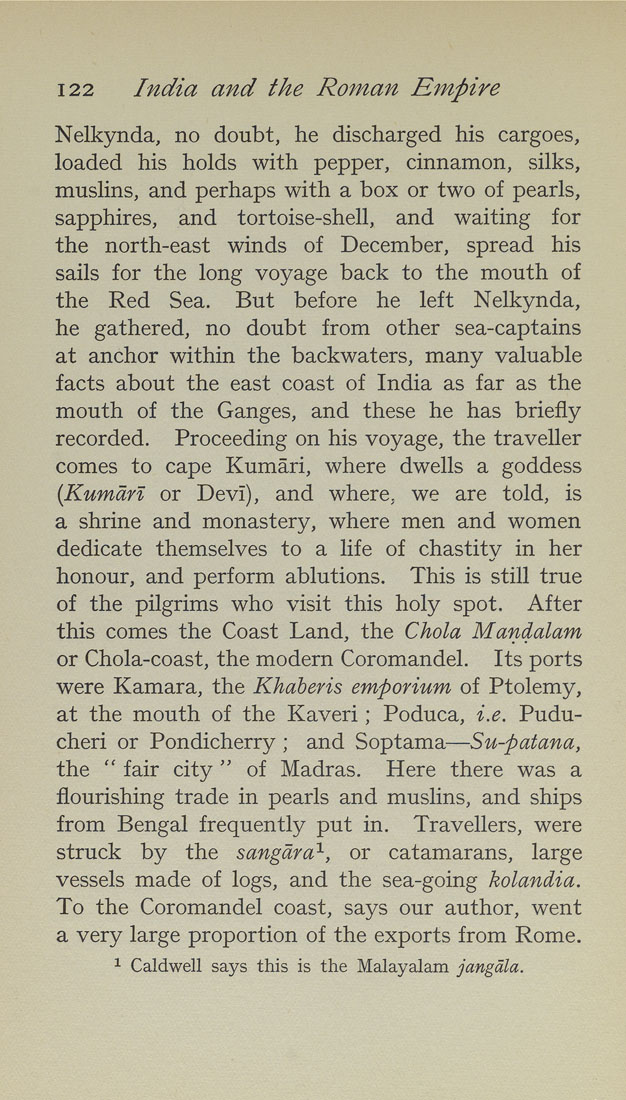122 India and the Roman Empire
Nelkynda, no doubt, he discharged his cargoes,
loaded his holds with pepper, cinnamon, silks,
muslins, and perhaps with a box or two of pearls,
sapphires, and tortoise-shell, and waiting for
the north-east winds of December, spread his
sails for the long voyage back to the mouth of
the Red Sea. But before he left Nelkynda,
he gathered, no doubt from other sea-captains
at anchor within the backwaters, many valuable
facts about the east coast of India as far as the
mouth of the Ganges, and these he has briefly
recorded. Proceeding on his voyage, the traveller
comes to cape Kumari, where dwells a goddess
{Kumdri or Devi), and where, we are told, is
a shrine and monastery, where men and women
dedicate themselves to a life of chastity in her
honour, and perform ablutions. This is still true
of the pilgrims who visit this holy spot. After
this comes the Coast Land, the Chola Mandalam
or Chola-coast, the modern Coromandel. Its ports
were Kamara, the Khaberis emporium of Ptolemy,
at the mouth of the Kaveri; Poduca, i.e. Pudu-
cheri or Pondicherry ; and Soptama—Su-patana,
the " fair city " of Madras. Here there was a
flourishing trade in pearls and muslins, and ships
from Bengal frequently put in. Travellers, were
struck by the sangdra'^, or catamarans, large
vessels made of logs, and the sea-going kolandia.
To the Coromandel coast, says our author, went
a very large proportion of the exports from Rome.
^ Caldwell says this is the Malayalam jangdla.
|








